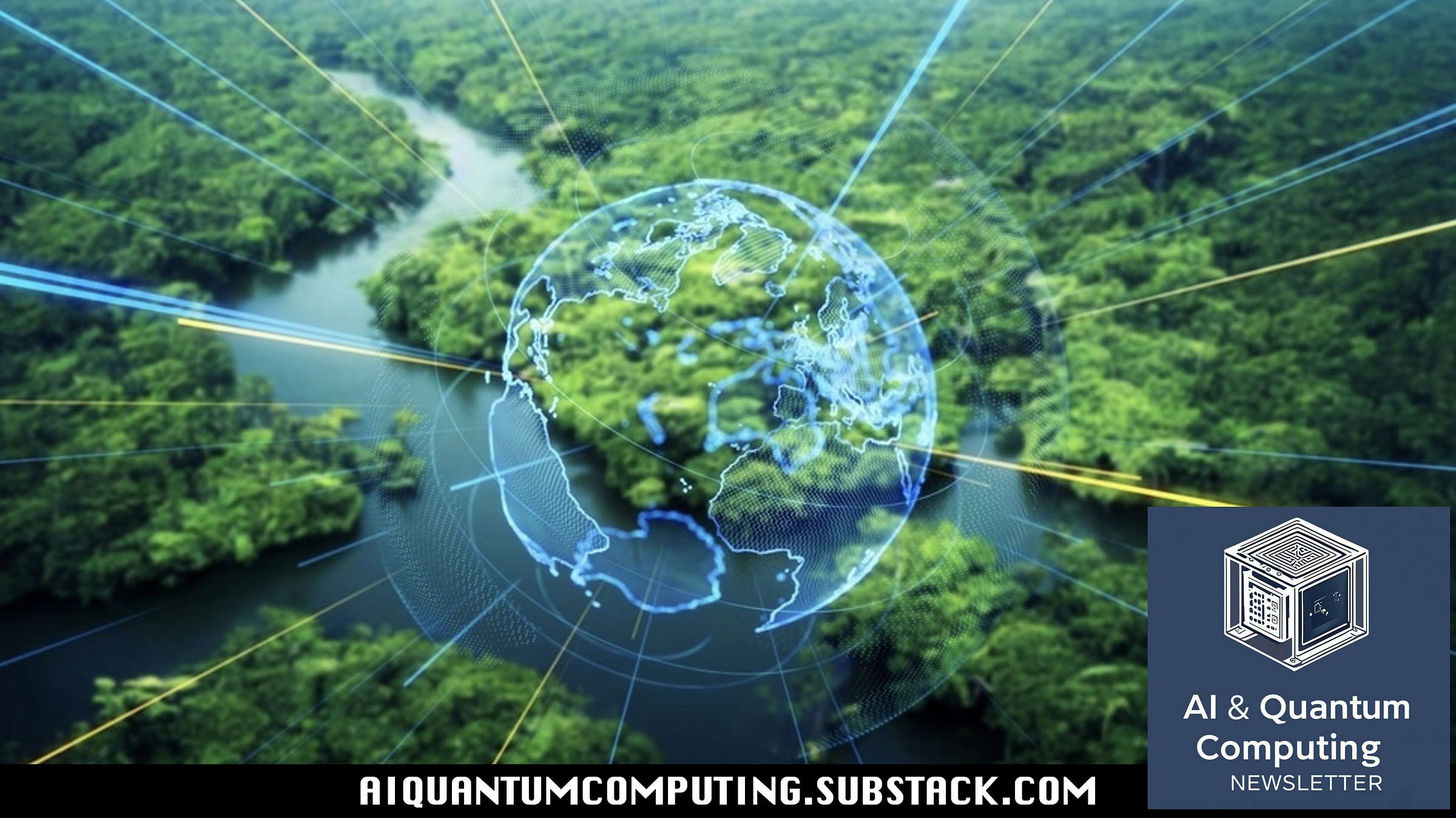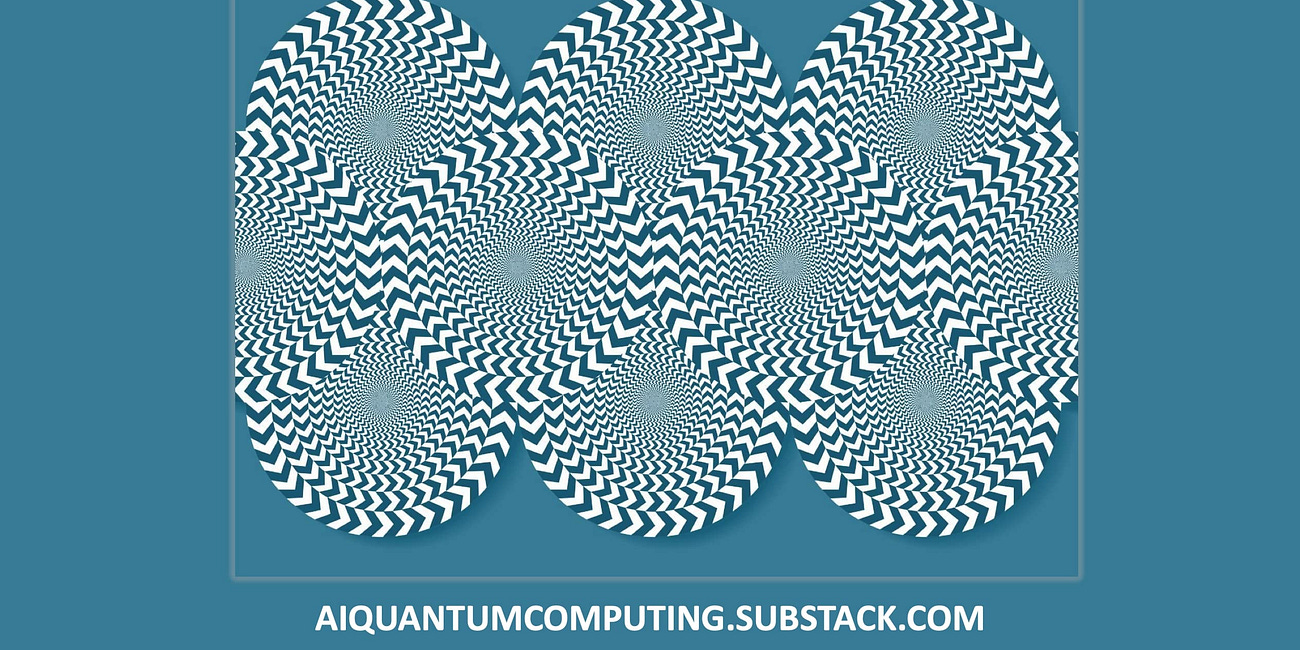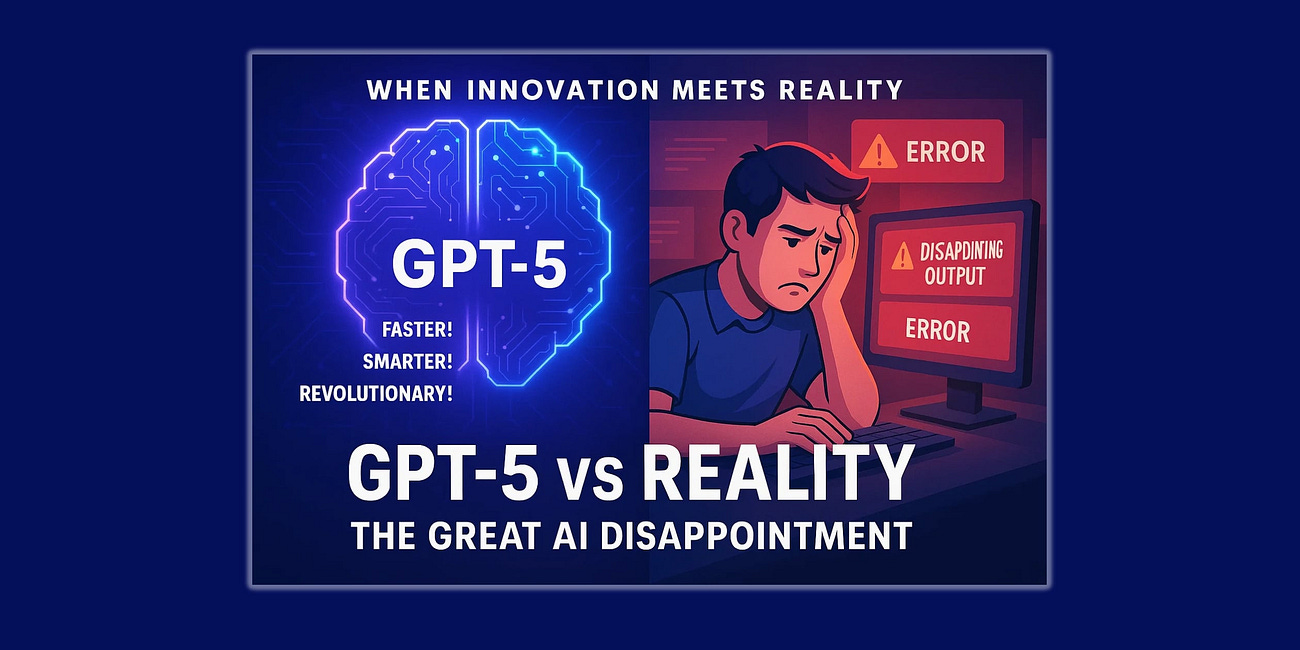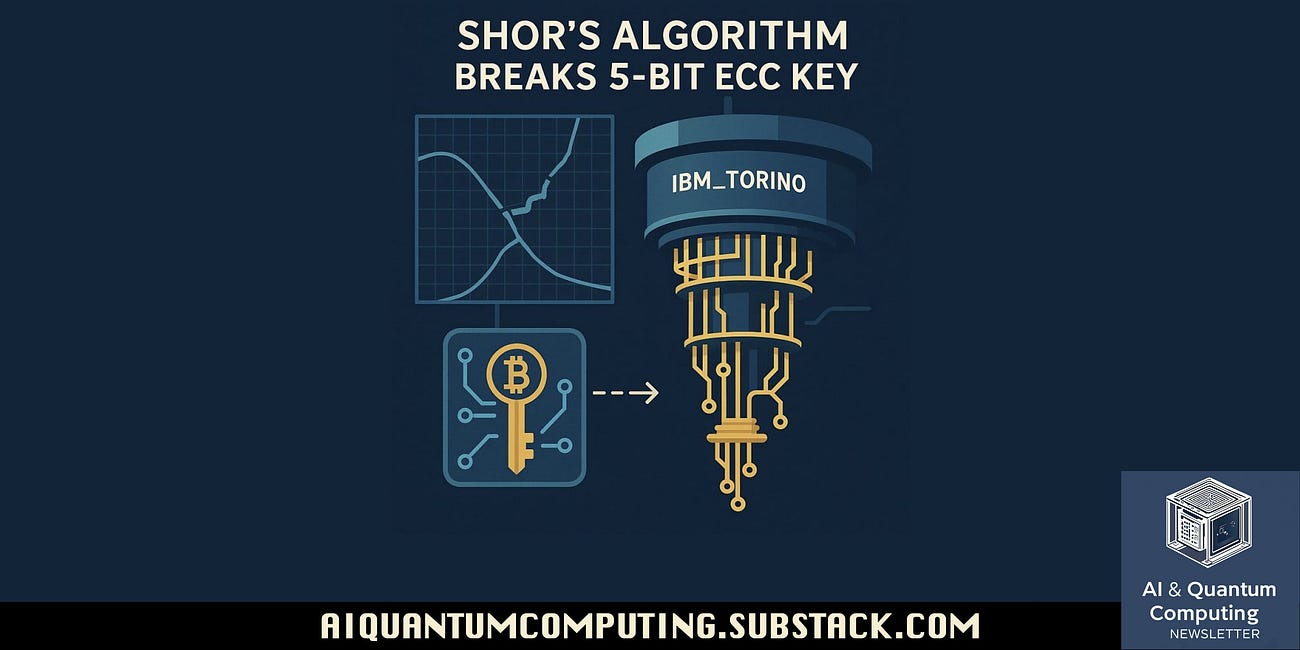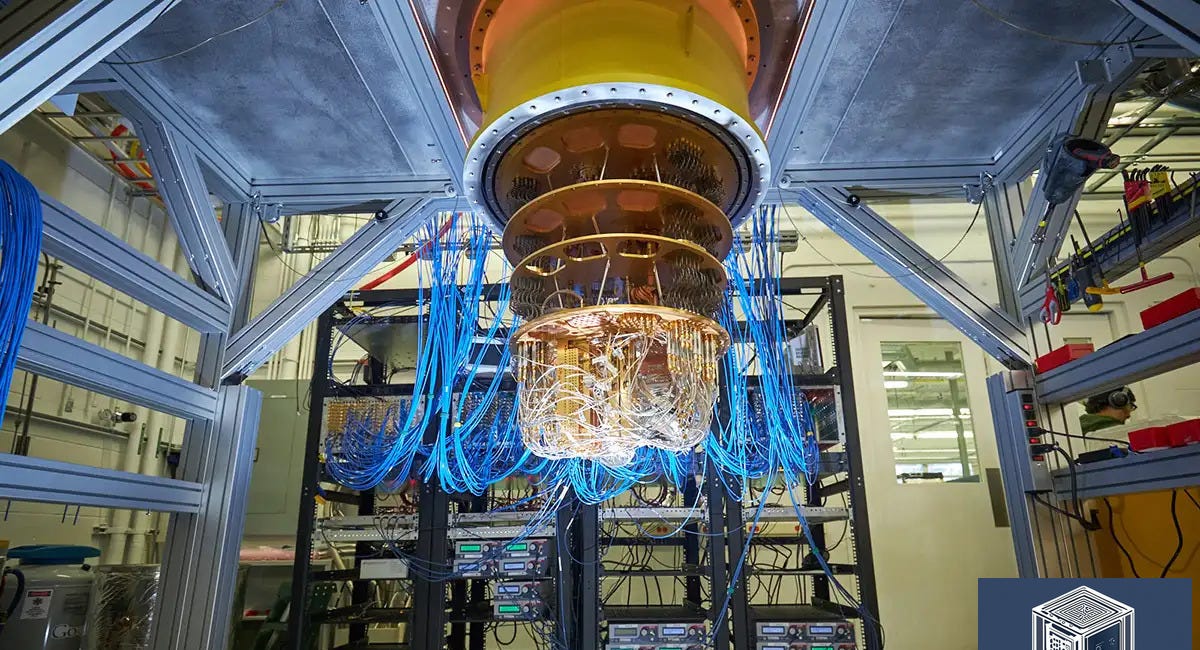Beyond Solar Panels: 3 Ways Quantum AI Is Secretly Fighting Climate Change.
Quantum AI is not a magic bullet. It is, however, a new kind of lever—the biggest one we’ve ever had.
Marseille, France – The sun is setting on this warm Saturday evening, August 23, 2025. From a vantage point overlooking the city, the view is a study in contrasts. To one side, the ancient, golden limestone of the Basilique Notre-Dame de la Garde catches the last rays of light. To the other, in the distance, the sprawling industrial port of Fos-sur-Mer begins to glitter with artificial lights—a testament to the immense power and energy that fuels our modern world. It is beautiful, and it is sobering. That industrial might is both the source of our prosperity and the heart of our climate crisis.
For decades, our response to this crisis has been visible and tangible. We see solar panels spreading across rooftops, their dark silicon a familiar icon of progress. We see majestic wind turbines spinning on hillsides. These are the frontline soldiers in our battle for a sustainable future, and they are essential. But they are not enough. They are classical solutions to a quantum problem.
The climate crisis, at its deepest level, is a crisis of chemistry and complexity. It’s about the way molecules of carbon dioxide trap heat, the way chemical bonds in fossil fuels release energy, and the impossibly complex, global-scale systems that move goods and people. To truly solve it, we need a tool that can operate on this fundamental level.
Silently, in super-cooled laboratories and on the servers of the world’s most advanced research institutions, that tool is being forged. It is Quantum AI—the fusion of artificial intelligence’s learning power with quantum computing’s ability to simulate nature itself. It is our secret weapon, working behind the scenes on solutions that go far beyond solar panels. Here are three of the most profound ways this new technology is fighting climate change from the inside out.
Quantum Computing: The Great Scientific Illusion.
Quantum computing. The name alone evokes images of limitless processing power, of unsolvable problems finally conquered, and of a technological revolution that will redefine science, medicine, and finance. At the heart of this promise lies a threat—or an opportunity, depending on your point of view:
1. The Molecular Matchmaker: Designing Catalysts for Clean Food and Carbon Capture
The word “catalyst” may sound technical, but the concept is simple. A catalyst is a “molecular matchmaker”; it’s a substance that dramatically speeds up a chemical reaction without being consumed by it. Catalysts are the invisible workhorses behind roughly 80% of all industrial processes, but our current catalysts are often inefficient, require enormous amounts of energy, and rely on rare, expensive metals. Quantum AI is about to give us the ability to design perfect catalysts from scratch.
The Fertilizer Problem: Take the Haber-Bosch process, the method we use to create ammonia-based fertilizer. This single industrial process is responsible for feeding roughly half the world's population—it is arguably the most important invention of the 20th century. But it is also a climate catastrophe, consuming 1-2% of the world’s entire energy supply and generating hundreds of millions of tons of CO2. It requires temperatures of 450°C and pressures 200 times that of our atmosphere. Meanwhile, tiny bacteria in the roots of soybean plants do the same thing at room temperature using an enzyme called nitrogenase. Nature’s catalyst is orders of magnitude more efficient than our own. The problem is, nitrogenase is so complex that classical computers cannot fully simulate it to figure out how it works.
The Quantum AI Solution: A Quantum AI can build a perfect, working digital twin of the nitrogenase enzyme. By understanding exactly how it breaks the powerful triple bond of nitrogen in the air, researchers can design a new, synthetic catalyst that mimics nature's efficiency. This would allow us to produce fertilizer with a tiny fraction of the energy and emissions. It would be one of the single greatest decarbonization events in human history, happening entirely at the molecular level.
The Carbon Capture Problem: A similar challenge exists for Direct Air Capture (DAC), the technology to pull existing CO2 out of the atmosphere. Current methods are incredibly energy-intensive and expensive, like trying to catch a few specific molecules in a vast, fast-moving river. We need a new catalyst—a new “sorbent”—that is hyper-selective, binding only to CO2 molecules and then releasing them with minimal energy input. Quantum AI is being used to model thousands of potential molecular structures to find the one with the perfect shape and electronic properties to do just that, making DAC an economically viable and scalable solution to remove our past emissions.
2. The Battery Alchemist: Inventing the Perfect Vessel for Green Energy
The great weakness of renewable energy is its intermittency. The sun doesn’t shine at night, and the wind doesn’t always blow. The ultimate success of a 100% renewable grid depends on one thing: our ability to store massive amounts of energy cheaply and efficiently. Lithium-ion batteries have been revolutionary, but they are not the final answer. Their energy density is limited, they can be a fire risk, and they rely on the costly and geopolitically fraught mining of lithium and cobalt.
The Materials Science Wall: Finding a better battery chemistry is a monumental challenge. The performance of a battery is determined by the complex quantum dance of ions moving through an electrolyte and inserting themselves into an electrode. There are millions of potential combinations of materials for these components, and testing them in a lab is a slow, expensive process of trial and error. Classical supercomputers can help, but they still struggle to accurately predict the properties of novel materials, leading to costly dead ends.
The Quantum AI Solution: Quantum AI allows scientists to become “battery alchemists,” exploring a vast, virtual library of undiscovered materials. A researcher can propose a new chemical composition for a solid-state electrolyte—which would be far safer and more energy-dense than current liquid electrolytes—and the Quantum AI can simulate it with perfect fidelity. It can predict its ionic conductivity, its stability, its lifespan, and how it will interact with different electrode materials before a single gram of it is ever synthesized.
This accelerates the innovation cycle exponentially. Instead of spending years physically testing a dozen bad ideas, researchers can use the Quantum AI to screen thousands of virtual candidates in a week, homing in on the few that have the highest probability of success.
The Goal: The destination of this research is a “holy grail” battery. Imagine a battery for an electric car that provides a 1,000-kilometer range and can charge in five minutes. More importantly, imagine grid-scale batteries made from abundant, sustainable materials like sodium or aluminum that can store a city's worth of solar energy to power it through the night. This is what Quantum AI is making possible. It is solving the storage bottleneck that is holding the renewable energy revolution back.
3. The Planet’s Optimizer: Eradicating Waste from Global Systems
While designing new molecules is crucial, a vast portion of our emissions comes from simple, brute-force inefficiency. Our global systems for logistics, agriculture, and energy distribution are riddled with waste. These are optimization problems of such colossal scale that they are beyond the scope of classical computers.
The Methane Blind Spot: Methane is a greenhouse gas over 80 times more potent than CO2 in the short term, and a huge amount of it leaks from natural gas pipelines, oil wells, and agricultural sites. The problem is finding these leaks; they are often diffuse and spread over vast, remote areas.
The Quantum Sensing Solution: Quantum sensors are one of the most promising near-term applications of quantum technology. They can detect infinitesimally small changes in magnetic or gravitational fields. When mounted on satellites, these sensors, guided by an AI, could create a real-time, high-resolution map of the Earth’s methane concentrations. This would allow us to pinpoint the exact location of major leaks with unprecedented precision, turning a vague global problem into a series of specific, actionable repair jobs. Plugging these leaks is one of the fastest and cheapest ways to put the brake on global warming.
The Logistical Nightmare: Consider the global shipping industry. Every day, tens of thousands of container ships, airplanes, and trucks move goods around the planet. Finding the optimal route for even a single vehicle is complex; finding it for the entire system is a combinatorial problem with more possibilities than atoms in the solar system.
The Quantum Optimization Solution: Quantum optimization algorithms are designed to handle exactly this kind of problem. A Quantum AI could look at the entire global supply chain as a single, dynamic system. It could calculate the most fuel-efficient routes for every ship in a fleet, factoring in ocean currents, weather patterns, port congestion, and real-time demand. It could redesign trucking networks to eliminate “empty miles” and reconfigure supply chains to be more local and resilient. The result would be a dramatic reduction in fuel consumption and emissions across the entire transportation sector, all achieved through superior intelligence and optimization.
The Quiet, Deeper Fight
As evening settles over Marseille, the lights of the port burn brightly, a constant reminder of the scale of the challenge. The visible solutions, like solar and wind, are essential components of our response. But they are not the whole story.
The secret, and perhaps more powerful, fight against climate change is happening at a level we cannot see. It’s happening in the simulated space between virtual atoms as a new catalyst is born. It’s happening in the quantum simulation of a crystal lattice that will become the perfect battery. It's happening in the optimization of a global network too complex for any human mind to grasp.
Quantum AI is not a magic bullet. It is, however, a new kind of lever—the biggest one we’ve ever had. It allows us, for the first time, to fight this battle on its own terms, at the fundamental levels of quantum chemistry and planetary-scale complexity. It is the quiet, deep, and ultimately hopeful work of building a sustainable world from the molecule up.
Is OpenAI's $100 Billion Valuation Built on Sand?
The noise was deafening. The promise, almost messianic. In the grand theater of Silicon Valley, where every announcement must be an earthquake, Sam Altman, the high priest of OpenAI, brought out the heavy artillery. A single image posted on X: the Death Star, the planet-destroying weapon of the Galactic Empire. The message, in its sublime arrogance, was…
The Day After Cryptography: How a Quantum Experiment Just Rang the Alarm Bell.
I don't know if you've had time to see this, but a recent news story has shaken the world of cybersecurity with the subtlety of an earthquake. Researchers at Arizona State University, in collaboration with teams from IBM, have just pulled off something incredible: they used Shor's algorithm on a quantum computer to crack an Elliptic Curve Cryptography (…
A Quick Look Back at the History of Quantum Computers.
With announcements in the field of quantum computing continuing to multiply in recent months, whether from Google, IBM, or Microsoft, I think it's interesting to look back at the first steps in the quantum world that have brought us to where we are today. It all started in 1900, as you will see, with Max Planck.

